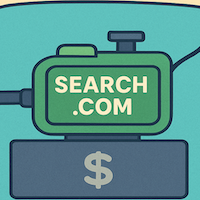Optimistic by nature, we marketers tend to rally behind the next big thing faster than you can say “sub-prime mortgage.” In 2008, marketers should avoid “strategic planning” hyperbole and focus instead on measuring their success one satisfied customer at a time.
The following is a brief look at 10 ideas that could help you engage prospects, bond with your customers and maybe even make the world a better place.
TIME TO GREEN
Having a “green” plan is no longer a luxury. Every day, another venerable brand — from HSBC to BP, Wal-Mart to Intel, Toyota to Aveda — announces its commitment to a sustainable future. While many of these hype initiatives fall under so-called “green washing,” delivering only a modest environmental impact, new rating services like B Corporation will help all of us tell the “difference between good companies and just good marketing.” As GE announces billions in green-related sales and BP fends off bad eco-press, you might even find a new eco-seat in the boardroom: “chief green officer,” or CGO. Dupont and Dow Chemical already have “chief sustainability officers.” Regardless of the title, make sure someone in your organization is evaluating the environmental impact of your company and setting measurable goals for the three “r’s” in green: reducing, recycling and reusing.
OUTDOOR ACTIVITY
The big surprise this year was the rebound in out-of-home advertising, which is growing faster than every medium except the Internet. This old standby reinvented itself as a technology-rich means of engaging, entertaining and educating — the three new “Es” of successful marketing — commuters who find themselves trapped in ever longer commutes. Mini Cooper tested RFID-activated billboards that personalized messages to drive-by customers. This highly customized approach linked “old” (outdoor) with “new” (online), transforming an integrated media platform into a cult-building private club.
“Narrowcasting” video networks continue to sprout, enabling marketers to put their messages in front of selective targets from health clubbers to deli shoppers (Captive Audience), moviegoers (IdeaCast), pet owners (SeeSaw Networks) and elevator riders (Captivate Network). Innovations like these will drive out-of-home to new heights.
GET IN THE GAME
Gaming now permeates our society, creating fresh ways for marketers to connect. Millions of non-golfers started swinging virtual clubs as the Nintendo Wii transformed the notion of video games. Senior citizen centers bought Wiis to entertain guests and to help connect with grandkids. MTV has invested $500 million in online games, on top of the millions it spent acquiring AddictingGames. And although gaming accounts for 13% of online time, it accounts for just 1% of online ad dollars. Even B2B marketers will be smart to give gaming a fresh look while seeking to blend messaging, training or recruiting with gaming.
MOBILE – I CAN HEAR YOU NOW
This may be the year to give mobile a closer look as technological improvements and new products create fresh opportunities for marketers. On the tech front, Bluetooth-enabled phones have made it easier for mobile marketers to provide contextually relevant information. The Air Force set up Bluetooth transmitters at racetracks to communicate with potential recruits. Apple’s iPhone, which seamlessly moves from cell to WiFi, partnered with Google and Yahoo to enable ad-supported programming. A new service, Cellfire, has enlisted a million people to receive coupons for burgers to videos. The promise of mobile marketing is that it can deliver highly personalized and useful information when and where you need it. As long as marketers don’t spam, mobile marketing could be the missing link in personalized communications.
JOIN THE CLUB
Marketers will be wise to capitalize on the growing appeal of social networks in 2008. Besides the Goliaths — MySpace and Facebook — social networks exist in niches, from teens (Piczo and Tagged) to seniors (Eons), photographers (Flickr), young do-gooders (AllDayBuffet), B2B (LinkedIn & Plaxo) and just about every interest group (MeetUp). Two more are under construction by Renegade, including a virtual Gilda’s Club for people living with cancer and a networking site for CMOs. For Chase, creating a partnership with Facebook has helped make their “+1” credit card the card of choice among college students. Other marketers might be smart to create a social network or to take an existing virtual social network and make it physical (Second Life had its first offline convention in 2007).
RISE OF THE WIDGETS
New mini-software applications, “widgets,” provide marketers unprecedented access to hard-to-reach targets, as Facebook and MySpace can attest. According to ComScore, more than 220 million folks used widgets last May. iLike, which allows Facebook users to share iTunes playlists, grew to more than 15 million users in under a year. Slide, which allows users to create slideshows and embed them in their social network homepages, claims to be the largest personal media network in the world, reaching 120 million unique viewers monthly. That’s but the beginning of the widget avalanche.
ROLL VIDEO
With greater than 70% broadband penetration in the U.S., streaming video is no longer optional, it’s a must-have tool for marketers. eMarketer reports 123 million Americans watch a video at least once a month; three-quarters tell a friend about a video. Whether you are a B2B or B2C marketer, video is an enormous opportunity to engage, educate and entertain. Video content exists on 92% of newspaper Web sites, up from 61% in 2006. Lots of brands now produce instructional videos to help customers understand how to install or use their product or service. Others create pure entertainment, hoping it will build brand affinity or drive Web traffic. But the ubiquity of video is not without its challenges. With 7 million-plus hours of video online, cutting through will require quality storytelling and judicious editing. One 2007 study notes that video viewing drops off dramatically after 30 seconds. Short and sweet videos will be the “up and down” of 2008: boosting traffic while reducing complaint calls.
FROM BEHAVIORAL TO CONTEXTUAL
Marketers would be smart to add behavioral targeting to contextual “search” efforts. AOL certainly believes in the future of behavioral targeting, having spent $275 million for Tacoda Systems, which claims to reach 120 million people in 31 discrete audience segments monthly. eMarketer predicted behavioral targeting will increase 10-fold over the next five years, growing from a $350 million to $3.8 billion ad spend. A test Renegade ran for Panasonic yielded 50% more imminent buyers of a particular consumer electronics product, making it far and away better than a simple search buy.
FOCUS ON THE EXPERIENCE
Marketers’ need to focus on an integrated approach to marketing is not news, nor will it be tomorrow. What will be news is how brand experiences will move to the top of the integration food chain, becoming the driving force of communications. It used to be that events and online initiatives were treated by marketers as “below the line” afterthoughts. Increasingly, marketers are realizing that interactive brand experiences can be far more effective than passive advertising and should be the starting point of a customer conversation. The Nike+ program, which helps runners be runners physically (at Niketown stores) and virtually (at Nike+’s Web site), is a great example of experience as marketing driver. Market research supports this approach as study after study reveals the enormous impact of brand experiences on consumer purchase intent, loyalty and likelihood to recommend.
MARKETING AS SERVICE
For years, marketers were more concerned with what they said than what the target heard, resulting in endless monologues that fell on deaf ears. Marketers who continually support customers through the course of life, providing genuine value in each communication, will score big in 2008. This value exchange can take many forms, but only if the marketer understands the needs and aspirations of its target and commits to a genuine dialogue at every point of contact. The HSBC BankCab, which provides free rides to HSBC customers in New York City, is but one example of marketing as service, transforming customers into brand evangelists with every ride. Marketers who treat marketing as service AND deliver real value to customers and prospects alike will undoubtedly triumph in 2008.
Drew Neisser is president and CEO of Renegade, the New York-based experiential marketing agency. Though his golf scores are quite unpredictable, his annual predictions have been above par for the past five years. Read his blog at http://www.MarketingForGood.net
TALK TO US!
We’d like to hear what you have to say about us or about news, trends and issues in promotion marketing. To contact the editor:
Mail: Promo, 249 W. 17th St., 3rd Floor, New York, NY 10011-5300
E-mail: larry.jaffee@penton.com
Phone: 212-204-4222
 Network
Network

